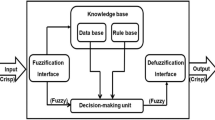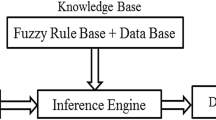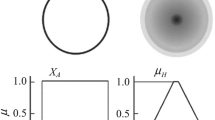Abstract
The requirements on the design of safety instrumented systems based on safety integrity level (SIL) have been developed continuously in the oil and gas industries. IEC 61508 and IEC 61511 explain various methods to determine the target SIL for specified safety functions, such as risk graph, risk matrix and layer of protection analysis. These methods could achieve different target SIL for the same safety function, principally due to uncertainty in the models. Additionally, uncertainties in the input parameters donate uncertainty in the output (target SIL). Based on conventional practice in oil and gas industry, engineer usually use different methods such as risk graph, hazardous event severity matrix and LOPA to evaluate target SILs for the same function and accept the most conservative value as the target SIL. In this paper, the uncertainty assessment in target SIL determination evaluated by the risk graph method using new fuzzy set approach has been done and finally a new framework based on this method is proposed.






Similar content being viewed by others
Notes
Bar Gage.
Pressure switch high–high.
Emergency shut down.
Pressure safety valve.
Center of area.
References
Abul-Haggag OY, Barakat W (2013) Application of fuzzy logic for the determination of safety integrity in light of IEC 61508 & 61511 standards. Int J Emerg Technol Adv Eng 3:41–48
Baghaei A (2013) 3-Parameters SPW technique: a new method for evaluation of target safety integrity level. J Loss Prev Process Ind 26:1257–1261
Baybutt P (2007) An improved risk graph approach for determination of safety integrity levels (SILs). Process Saf Prog 26:66–76
Blackmore L (2000) IEC 61508-Practical experience in increasing the effectiveness of SIL assessments. ISA EXPO
Bowles JB, Peláez CE (1995) Fuzzy logic prioritization of failures in a system failure mode, effects and criticality analysis. Reliab Eng Syst Saf 50:203–213
Cheng C-H, Lin Y (2002) Evaluating the best main battle tank using fuzzy decision theory with linguistic criteria evaluation. Eur J Oper Res 142:174–186
Commission IE (2000) Functional safety of electrical/electronic/programmable electronic safety related systems IEC 61508
Dean S (1999) IEC 61508-assessing the hazard and risk. Sauf Consulting, April
Gulland W (2004) Methods of determining safety integrity level (SIL) requirements-Pros and Cons. In: Redmill F, Anderson T (eds) Practical elements of safety. Springer, London, pp 105–122
Hauge S, Hokstad P, Onshus T (2001) The introduction of IEC 61511 in Norwegian offshore industry. In: ESREL, pp 483–490
IEC61508 (2010) Functional safety of electrical/electronic/programmable electronic safety-related systems
IEC61511 (2010) Functional safety—safety instrumented systems for the process industry sector
Kim S, Chang K, Kim Y (2013) Risk-based design for implementation of SIS functional safety in the offshore industry. In: Proceedings of the European safety and reliability conference 2013 (ESREL 2013), London, pp 1875–1880
Kirkwood D, Tibbs B (2005) Developments in SIL determination. Comput Control Eng J 16:21–27
Mamdani EH, Assilian S (1975) An experiment in linguistic synthesis with a fuzzy logic controller. Int J Man Mach Stud 7:1–13
Markowski AS, Mannan MS, Bigoszewska A (2009) Fuzzy logic for process safety analysis. J Loss Prev Process Ind 22:695–702
Muhlbauer WK (2004) Pipeline risk management manual: ideas, techniques, and resources. Gulf Professional Publishing, Houston
Nait-Said R, Zidani F, Ouzraoui N (2008) Fuzzy risk graph model for determining safety integrity level. Int J Qual Stat Reliab 2008:263895
Ormos L, Ajtonyi I (2004) Soft computing method for determining the safety of technological system by 1EC 61508. In: Proceedings of the 1st Romanian-Hungarian joint sympsiom on applied computational inelligence (SACI’04)
Ouache R, Adham AA (2014) Safety instrumented systems between reliability and fuzzy. Int J Inf Syst Eng 2:173–185
Redmill F (1998) IEC 61508-principles and use in the management of safety. Comput Control Eng J 9:205–213
Simon C, Sallak M, Aubry JF (2007) SIL allocation of SIS by aggregation of experts’ opinions. In: Safety and reliability conference, ESREL’2007. Taylor and Francis, pp 753–761
Simpson KG (2004) Functional safety: a straightforward guide to applying IEC 61508 and related standards. Taylor & Francis
Smith DJ, Simpson KG (2010) Safety critical systems handbook: a straightfoward guide to functional safety, IEC 61508 (2010 edition) and related standards, including process IEC 61511 and machinery IEC 62061 and ISO 13849. Elsevier,
Timms C (2004) IEC 61511/an aid to COMAH and safety case regulations compliance. Meas Control Lond Inst Meas Control 37:115–122
Zadeh LA (1973) Outline of a new approach to the analysis of complex systems and decision processes. IEEE Trans Syst Man Cybern 1:28–44
Zadeh LA (1975) The concept of a linguistic variable and its application to approximate reasoning—II. Inf Sci 8:301–357
Author information
Authors and Affiliations
Corresponding author
Additional information
Publisher's Note
Springer Nature remains neutral with regard to jurisdictional claims in published maps and institutional affiliations.
Rights and permissions
About this article
Cite this article
Raeesivand, A., Kasaeyan, M. New fuzzy uncertainty assessment approach of target SIL evaluation by risk graph optimization. Life Cycle Reliab Saf Eng 8, 291–302 (2019). https://doi.org/10.1007/s41872-019-00093-0
Received:
Accepted:
Published:
Issue Date:
DOI: https://doi.org/10.1007/s41872-019-00093-0




